Rattner Reacts To GM's Sub-IPO Stock Price
As the former “car czar,” who led the government’s restructuring of GM and Chrysler, Steve Rattner has a considerable interest in portraying his pet projects as having turned the corner. But in a recent CNBC appearance, Rattner acknowledges that the market is “spooked” by GM’s increased reliance on incentives and the “unexpected” departure of its Chief Financial Officer. Ford, meanwhile, simply gets rapped for not communicating a slightly lower Q4 profit than Wall Street expected. And though Rattner’s not the guy to press the point home, there’s a clear distinction to be made between a much-hyped stock aligning itself with expectations (while making a tidy $6b+ profit) and a company that’s losing key personnel while leaning on incentives to recover the volume lost on brand and dealer cuts. But Rattner’s got bigger worries than short-term financial performances, or incentives or personell changes… he sees another, equally familiar problem that’s fixing to give GM (and, to a lesser extent, Ford) the fits: rising gas prices.
Though Rattner refuses to put his finger on a gas price “freak out” number, he does call oil prices the “overarching” problem confronting America’s two largest automakers (Rattner never even mentioned Chrysler), saying
Ford and GM, and especially GM, are not perfectly positioned if everyone moves back to small cars to deal with the price of oil… There isn’t a lot they can do…they can’t suddenly come out with a new car model to deal with the price of oil, so they have to play the hand they have.
And despite Bob Lutz’s argument that gas prices won’t have as extreme of an impact on consumers due to the lack of a 2008-style extreme spike, Rattner has a strong point here. According to the NYT, GM will have to pay around $1,219 per vehicle just to comply with the 2016 CAFE standard of 34.1 MPG, while major competitors like Toyota ($455 per vehicle), Honda ($574 per vehicle) and Hyundai ($745 per vehicle) will have to shell out considerably less.
Rattner’s acknowledgment of GM’s weak position vis-a-vis rising gas prices is troubling for at least two reasons. First, it makes the government far less likely to recover the bailout funds that Rattner has as good as promised taxpayers. Second, it underlines the cynicism of the bailout’s greenwashed veneer, pointing out that rescuing GM and Chrysler did nothing to make them “green car leaders.” As the NLPC’s Peter Flaherty points out
Of course, the Chevy Volt was supposed to be perfectly positioned when oil prices went up. Rattner didn’t even mention it.
Between “business as usual” sales-boosting policies, volatility amongst upper management and its unpreparedness for high gas prices, the argument that GM was truly transformed by the bailout is becoming tougher to make. Especially when the man responsible for the bailout’s restructuring acknowledges that the problems are serious and not going away any time soon. And with quadrennial labor negotiations with the UAW coming up, GM, Chrysler and Ford have a new problem on the horizon as well. It’s clearly far too early for America’s automakers to start resting on their laurels…
More by Edward Niedermeyer
Latest Car Reviews
Read moreLatest Product Reviews
Read moreRecent Comments
- FreedMike Awfully nice car.
- Cprescott So is this going to lie and tell you that they have quality products at affordable costs that won't get recalled?
- SCE to AUX So they might continue gigacasting 3 pieces instead of 1. Tesla does gigacasting as a business advantage, so they aren't abandoning it. They probably ran into some tech challenge related to integrating 3 pieces into 1, so 3 will do.Meanwhile Toyota and several Chinese mfrs are adopting gigacasting because of Tesla.
- Tassos Great Choice, far better than an ES350. I prefer one size larger and a V8 as in the LS460, but it is probably not as agile as the GS.And thus spake the REAL TASSOS.
- Ajla "appealing to its customers"





















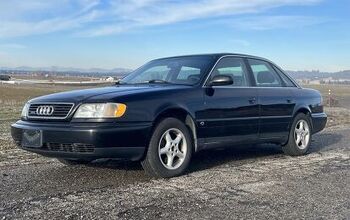

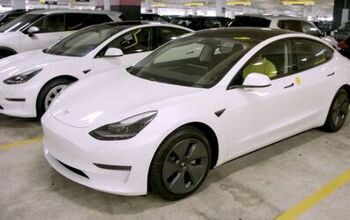
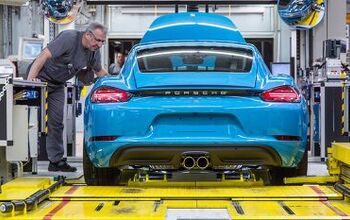

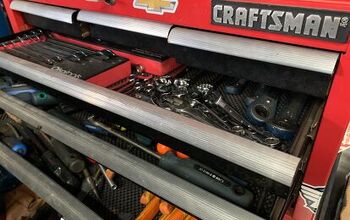




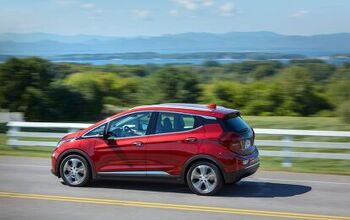
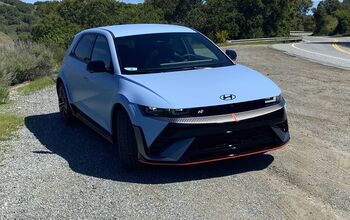
Comments
Join the conversation
actually, GM (and Ford) are better positioned for a summer of high gas prices than before. As the article mentions "Ford and GM, and especially GM, are not perfectly positioned if everyone moves back to small cars to deal with the price of oil… There isn’t a lot they can do…they can’t suddenly come out with a new car model to deal with the price of oil, so they have to play the hand they have." Except, both automakers do have small cars with high fuel efficiency ratings (Cruze and Focus, not to mention the Volt). Any coming gas price spike won't be as damaging to GM's bottomline as most analysts (and TTAC writers) prognosticate.
Rattner does seem ignorant of the fact that GM actually beats top competitors in fuel economy in just about every volume segment today. Not only is Cruze the gas engine leader, the e-assist mild hybrid system is being rolled out as a standard on LaCrosse, for example, and will see wider use in the future. Many seem to focus on a handful of maximum efficiency vehicles, ignoring the vast number of other vehicles that are selling. The MYTH that fuel economy sells is exposed by the reality that trucks still capture over half the U.S. market, as they have since 1999. Despite relatively high priced gas, trucks accounted for 52% of sales in the first two months of 2011. Not one single high mileage car makes it onto the top 10 selling cars or top 10 truck lists. In fact, high economy cars account for about a 10% sliver of the market. No one makes much, if any money on this low priced segment, btw. I suspect the NYT's chart is flawed with the false notion that all makers have to achieve the same CAFE target. This is no longer true under the new system. The footprint of the vehicle is taken into account so that makers with a larger vehicle mix have lower targets. This helps the domestic makers who dominate the truck segment. GM is quite likely to report very strong profit results this year which should put the stock price back on an upward trend. The stock market is not always rational and can turn on a dime, as we have seen. Only time will tell.